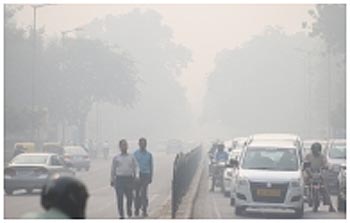 Patna: Patna remained the most polluted city in India with a 24-hour Air Quality Index (AQI) of 419—falling under the severe category on Tuesday.
Patna: Patna remained the most polluted city in India with a 24-hour Air Quality Index (AQI) of 419—falling under the severe category on Tuesday.
As the winter sets in over the eastern parts of India, the high-pressure system has started to dominate. With the supply of water vapour from the River Ganga and the Bay of Bengal, the Indo-Gangetic plain in Bihar and West Bengal is witnessing the formation of very dense fog during late night and early morning hours.
Along with the fog, the persistent pollution in the region has led to a drastic decline in the air quality across most of the cities in Eastern Uttar Pradesh, Bihar and West Bengal. On Tuesday, Patna remained the most polluted city in India with a 24-hour Air Quality Index (AQI) of 419—falling under the severe category.
The only other city that was in the severe category was Muzaffarpur in Bihar with an AQI of 402, as per the Central Pollution Control Board (CPCB) 's daily bulletin. Other eastern cities like Varanasi, Howrah, and Asansol also witnessed high pollution levels with AQI in 'very poor' levels. During the weekend, Varanasi had reportedly witnessed record levels of air pollution with AQI reaching a whopping 811.
AQI values from 301 to 400 are categorised as 'very poor' while those from 401 to 500 are 'severe'. While severe levels of pollution affect even healthy people and severely impacts the vulnerable population, very poor levels induce respiratory illness on prolonged exposure.
Delhi's air quality remained 'poor' on Wednesday, thanks to improved wind speed. While Delhi recorded a 24-hour average AQI of 270, Ghaziabad and Palwal witnessed AQI of 300 and 294 respectively. The forecasts suggest chances of isolated thunderstorms across Delhi-NCR on Wednesday.
With substantial rainfall and wind direction not favouring the transport of pollutants from stubble burning, air quality is set to improve further on Wednesday. Moreover, as the stubble burning coming down, and the wind speed picking up, Delhiites are hoping that the worst might be over. For the eastern cities, however, more 'severe' air quality days might be on the cards.
